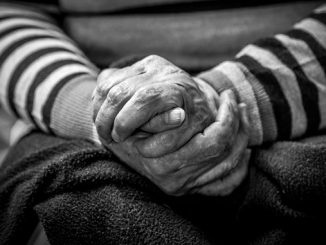The COVID-19 pandemic wreaked havoc on long-term care in Canada. During the first two waves in 2020, over 80 percent of all Canadian COVID-19 deaths happened in long-term care homes. While vaccination and policy changes have helped to reduce the number of deaths, long-term care homes are still experiencing COVID-19 outbreaks and severe staffing shortages.

The people who provide the front-line care to our most vulnerable seniors in long-term care have experienced trauma during this time — watching those in their care suffer and die, while putting themselves, and even their own families, at risk in the service of their work.
They must not be forgotten as federal and provincial governments begin the hard and essential work now to reform long-term care in Canada. Efforts to improve the quality of care and quality of life for long-term care residents must include initiatives that address the health and well-being of front-line workers, such as care aides.
Certified nursing assistants, personal support workers and other care aides provide up to 90 per cent of direct care to long-term care residents in Canada. They are the largest workforce in long-term care and their health and well-being directly affects the quality of care that long-term care residents receive.
In a recently published study, my colleagues and I found that care aides are still experiencing adverse effects from working through the COVID-19 pandemic.
Our study surveyed 52 care aides from nine long-term care homes in Alberta and British Columbia between January and April 2021. It included both for-profit and not-for-profit homes and homes that experienced high and low rates of COVID-19 infections from March to December 2020.
Prior to the pandemic, these workers were already experiencing some job dissatisfaction and many were at a high risk of burnout. Many worked part-time without benefits. They also faced systemic biases, as mostly middle-aged, female immigrants whose first language was not English and who had limited post-secondary education or formal training.
While difficult working conditions in long-term care homes existed well before COVID-19, the pandemic exacerbated them.
Our study found that care aides suffered mental and emotional distress working at long-term care homes during the first waves. They felt grief as residents died from COVID-19, with some reporting that it felt like they had lost their own parent or grandparent.
They felt guilty as they watched residents’ mental, physical and cognitive health decline from long periods of isolation and extreme loneliness during lockdowns.
They worried about contracting the virus and transmitting it to residents or their own family members. Care aides described going to great lengths to prevent spreading COVID-19 to their family, including changing clothes in their garage after work and sometimes avoiding family members altogether.
They also struggled with severe staffing shortages, which increased their workload and reduced the amount of time they could spend providing one-on-one care to residents. There was little time for resident bathing, oral care, hair or nails or making human connections through a hug or holding hands.
They also faced communication issues, with normal channels breaking down. Care aides said they rarely spoke to long-term care managers directly and were often not included in consultations on resident care planning despite their knowledge of residents’ needs and wants. They reported being the last to find out about policy changes, sometimes learning things second- or third-hand.
Some care aides also suffered wage losses when pandemic policies required them to work at only one long-term care home to reduce the chance of spreading COVID-19. The resulting pay reductions made it difficult for some to support their families.
To cope with the difficulties, care aides relied on peer support, teamwork and, sometimes, their faith communities. Sharing their fears and experiences with each other helped them remain resilient.
However, despite their resilience, they need more support.
They need better pay and working conditions, more full-time hours, and adequate staffing levels and resources, pandemic preparedness, and mental health supports.
Strategies to support care aides must be developed in partnership with them and take into account their cultural diversity. This will not be easy. The health care system, and particularly long-term care, is under major stress with severe staffing shortages. Managers and other provider groups are also under significant duress.
But care aides care are the ones who provide direct care to our mothers and fathers — upwards of 90 per cent. They are also the ones providing significant emotional and quality of life support.
To overlook this group is to risk jeopardizing the quality of care, quality of life and quality of end of life for vulnerable residents in long-term care homes.
About the author:

Dr. Carole Estabrooks is Scientific Director of Translating Research in Elder Care (TREC) and Professor & Canada Research Chair, Faculty of Nursing at the University of Alberta.



